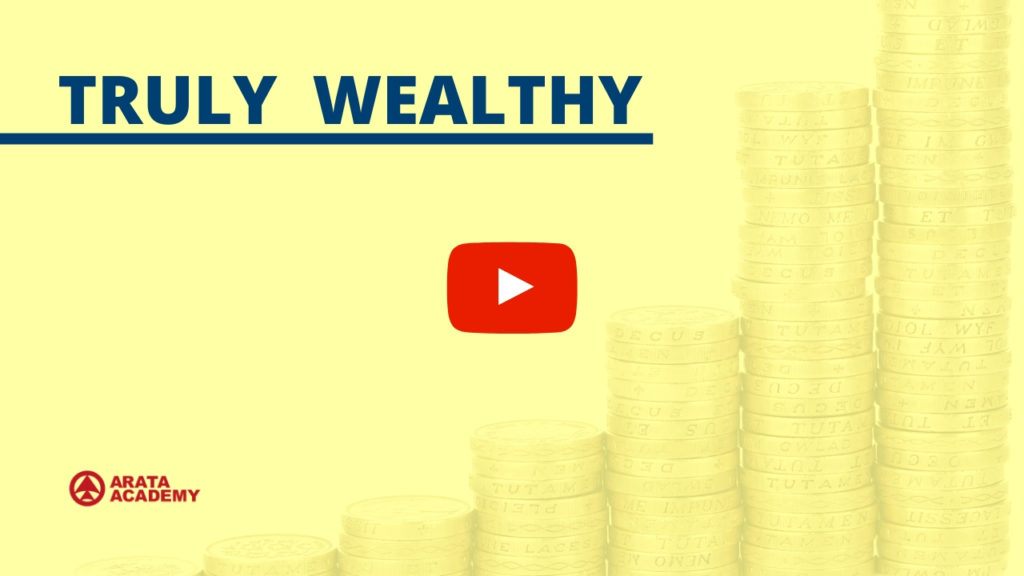Hello! Seiiti Arata. In this video you will learn the best way to invest your money. It’s a proven strategy. It doesn’t matter how much money you have to make your first investment with. This unique investment technique can make or break your financial future. This video is quite practical, and before you learn the technique, you need to know some basics.
1. What does it mean to truly invest?
The first thing we need to consider is what an investment actually is. An investment operation is one that, after thorough analysis, promises safety of the principal amount and a satisfactory return. If there is no deep analysis of the risk, no guarantee of safety for the initial amount invested, and if there is no satisfactory return, it is not an investment. It is speculation.
If you continue watching this video, you will learn three things. (i) How to avoid losing money in investments, (ii) how to maximize the chances of gaining a sustainable income, and (iii) how to control the type of self-destructive behaviour that affects most peoples’ financial prosperity.
There’s a lot to be said about investments. This is a short video, aiming to give you a brief introduction to making investments. Because of this, I’ll avoid using technical terms or minor details that won’t make any difference to your development. I won’t bother showing you detailed calculations either, just the general principle of how investments work.
2. You need a consistent strategy.
You must understand that, when investing, there will always be the first stage of putting money into your chosen investment. Then there is the second stage, when you back out of the investment and get your money back, preferably with the proper return. You leave the investment when you sell your stocks. You can sell your investment to buy other financial products… or you can simply use the money to fulfil a dream that’s been a long time coming, or to pay for your daily expenses. Take into consideration that investing is basically just a big game of buying and selling.
The thing that’ll make a big difference is having a consistent strategy that allows you to buy shares cheaply and sell them at a higher price. This is how you make money from your investments. This doesn´t necessarily mean that you need to be constantly making transactions. There’s no need to be buying and selling shares all day, every day. Actually, you will soon find out that it is better to carry out as few transactions as possible so that you can avoid factors that might decrease your profit, such as taxes and fees that you might encounter.
If the answer isn’t necessarily in how often you buy and sell your shares, but in investing money when stocks are cheap and withdrawing it when the stock market is worth a lot, what kind of strategy should you have? How can you make sure that you’re always buying at cheap prices and selling for as much money as possible?
3. Understand your investor profile.
You need to start by knowing what your profile is, what your skills are, how much you’re willing to risk, and how much time you want to devote to investing and learning. You need to know what your plans, keeping in mind what stage of life you’re in. You also need to know how likely it is that your plans will change over the next few years.
Because of this, our financial enrichment course focuses on interactive activities that you will carry out with me, so you can get to know yourself a bit better. Visit the link to start now: https://arata.se/moneytaboo
Once you understand more about your investor profile, you can create your own smart strategy.
4. Create your ideal strategy.
Based on the information on your investor profile, you will be able to decide how to distribute your money between different investment opportunities. This is what we will call your ideal strategy. Pay close attention to the word “ideal”. That means it’s an idea. It’s a reference, a goal. It’s a compass to guide you. It doesn’t mean that your money will always be distributed in this ‘ideal’ way. It wouldn’t be possible, given that your personal circumstances and the stock market are both constantly changing.
5. The market goes up and down.
Let’s say that for your profile, the ideal strategy would be to distribute your investments by putting ten percent in stocks and ninety percent in government bonds.
(This is the part where I promised I wouldn’t go into detailed calculations. Let’s keep it simple so that you can understand the general principle).
So, if today you were to manage to keep your investments as close as possible to your ideal strategy, you would realise that tomorrow, they will no longer follow your ideal strategy.
The stocks may have risen or fallen. Because of this, they will no longer be worth the ten percent that they were worth yesterday.
If their value dropped a lot, you could then change 5% of your shares into stocks and the other 95% in government bonds. Now imagine the opposite situation: maybe the stocks that you bought are from companies that have performed well, and they have become more valuable. Your distribution ended up shifting to 20% stocks and 80% bonds.
Can you see how the market can fluctuate and affect your investment distribution? The change happened without you even lifting a finger: even though you didn’t buy or sell anything, the market went down or up and therefore the distribution of your investment portfolio had changed. THIS IS THE SECRET OF SUCCESSFUL INVESTING.
6. Continue taking care of your investments, following your ideal strategy.
Remember the ideal strategy that you set up? We will continue to follow the example of the ideal distribution of 90% in government bonds and 10% in stocks.
Imagine that because of the rise of value in your shares, you currently have 80% of your money in government bonds and 20% in stocks. What would you do next month, when you receive your wage and have more money available to invest? You would buy more government bonds. This is the choice that would bring you closer to your ideal strategy. When you put more money into government bonds, you would be returning to the ideal investments ratio that you initially set up: 90/10.
Please remember: the 90/10 ratio is just an example. It could be 50% in government bonds and 50% in stocks. If you have a lot of money to invest, you could have an even bigger range: you could have 30% in European stocks, 20% in American stocks, 10% in government bonds, 10% in corporate debt securities, 10% in real estate, 10% in gold and silver, 5% in bitcoin and 5% in art. Or any other number, based on what you find out after looking at your investor profile. The important thing is that you always make choices that will help match up your investments with your ideal strategy.
In the example we gave, by putting more money into government bonds, you avoided buying more stocks at a high price.
Imagine that you continued with this strategy for several months. However, because of some unforeseen event, a few months went by where you didn’t have the time to make any investments. You had been so busy that you didn’t even look at your investments. On top of this, you now need to sell part of your investments (in this example you could even imagine that you had an emergency fund, which you used but that even with that money, you still need the cash from some of your investments).
You check how much you have available and realize you have 30% in stocks and 70% in government bonds. In this case, what would you be willing to sell? You’re right if you chose to sell the shares. They have gained value, therefore when you sell them, you are selling them for a higher price than you paid. The principle is very simple, and it works.
This strategy helps us overcome our self-destructive, panicked behaviour when we are under pressure, and helps us avoid being greedy when our shares are worth a lot. Make your ideal strategy and then make sure you always stick to it. Use the ideal investments ratio to decide where to apply new resources among the different options of your investment portfolio. Always use the ideal ratio as a reference and decide how to get closer to it. It’s pretty simple.
I know this explanation might seem counterintuitive. Many people may find that by doing what I’ve said, they are selling their winning investments and keeping ahold of the ones that aren’t worth much. However, when you look at the numbers, you will see that you are actually buying them at a low rate and selling them for a lot more money.
This video has been purposefully simplified so that you can understand the fundamental principle of investing. For those who wish to deepen their knowledge, you are welcome to take part in our course about finance, which is available here: arata.se/moneytaboo
There are different technical details that could be explained in more depth, such as the importance of diversifying within each asset class. Within different government bonds, which ones would you buy? Within different stocks, which ones would you choose? How would you avoid fees and taxes that could decrease the amount of profit you make? How could you adapt the ideal ratio as your future plans change? At different times in your life, you will have different priorities and will be more or less willing to make risky investments.
We also didn’t mention any technical terminology in this video, such as diversification, balancing, asset allocation, ETF, technical analysis, fundamental analysis, or simulations. The main message is that you should know what your profile is, know what your plans are, what you are capable of, how to set up your ideal strategy and how to use that strategy to buy shares for a low price and sell them on for more money. It’s really that simple. Anyone can do it. I want to help you to become more confident and improve your investments – visit arata.se/moneytaboo, where we can carry on with the course.

